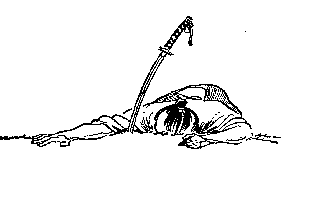by Neil Ohlenkamp
Some of the available records trace the origin of this school to a Chinese combat based upon the principle of ju (suppleness), as explained and illustrated by Chin Gempin to selected warriors of 17th century Japan. Another version associates this method with two other noted jujutsu experts, Yoshimura and Takenaka. These techniques, generally performed in full armor or in formal robes resembling armor, are centered upon throwing an opponent to the ground. They were considered difficult even by masters such as the founder of Judo, Jigoro Kano, and the founder of aikido, Morihei Ueshiba, both of whom had studied them at great length before incorporating any of their features into their own modern methods. Jigoro Kano could be considered doshu (heir of the tradition) of kito ryu because he has the transmission (shiho) directly from Iikubo Tsunetoshi, the previous headmaster of the ryu. The original concepts of Kito Ryu are forever preserved in the Judo kata, particularly the koshiki-no-kata. In addition, many of the early judo leaders, such as the tenth dan Nagaoka and Isogai, and ninth dan Kanemitsu, came to Judo from kito ryu backgrounds, further influencing the development of judo. Kuzushi, the breaking of balance that is of fundamental importance to judo, and other major concepts adopted by the Kodokan came from kito ryu.
|

 The Kito Ryu is a system of jujutsu that merits a particular place in the doctrine of unarmed martial arts because of its esoteric elements, adopted along with various techniques and training methods (such as randori) in Judo. Of particular interest are the kata that have been preserved by the modern inheritors of kito ryu. Kito ryu is the “rise and fall” school of jujutsu.
The Kito Ryu is a system of jujutsu that merits a particular place in the doctrine of unarmed martial arts because of its esoteric elements, adopted along with various techniques and training methods (such as randori) in Judo. Of particular interest are the kata that have been preserved by the modern inheritors of kito ryu. Kito ryu is the “rise and fall” school of jujutsu.